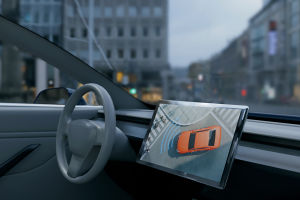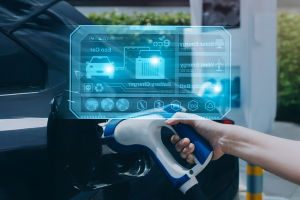Could the commute transform from bumper-to-bumper frustration into seamless, stress-free travel? friends, imagine stepping into a world where autonomous vehicles (AVs) glide through streets, turning rush-hour gridlock into a smooth ride.
By reallocating parking spaces and enabling productive time on the move, AVs promise a future where urban living feels lighter, greener, and more connected.
Stakeholder Roles
The transition to driverless fleets demands collaboration among city planners, automakers, and technology firms. Urban designers must retrofit roads with dedicated AV lanes and smart sensors, while legislators craft safety and liability frameworks. Meanwhile, mobility providers integrate AVs into existing networks, ensuring that self-driving shuttles, robo-taxis, and delivery bots align with local regulations and community needs.
City Variations
No two cities are alike. In sprawling Los Angeles, shared AVs could slash an estimated 2.7 million metric tons of CO₂ annually by converting solo drivers into passengers of robo-taxis. Compact Berlin may save $1.6 billion a year in transport costs by blending AV fleets with robust public transit and e-scooter hubs. Tailored strategies ensure each metropolis taps AV benefits according to its unique geography and commuter patterns.
Emissions Challenge
Urban vehicles account for roughly 40% of global CO₂ emissions. By shifting from private cars to electric AVs shared among many, cities can cut tailpipe pollution and clear the air. Imagine neighborhoods once choked with exhaust transformed into pedestrian-friendly boulevards. Reduced emissions not only improve health outcomes but also help cities meet ambitious climate targets set for 2030 and beyond.
Congestion Issues
Traffic jams cost billions in lost productivity each year. AVs, guided by AI algorithms, dynamically reroute to avoid bottlenecks and maintain optimal speeds. Shared fleets can decrease the total number of vehicles on roads, easing peak-hour peaks. In Singapore, pilot programs show that intelligent ride pooling can reduce downtown traffic by up to 20%, freeing commuters from endless idling.
Space Reclaimed
Vast tracts of asphalt currently reserved for parking can be repurposed as green spaces, playgrounds, or bicycle lanes. Autonomous fleets, available on demand, eliminate the need for long-term parking lots. Places like Brisbane are already piloting "park-once" districts, where vehicles drop passengers and automatically park in centralized garages—opening city blocks to parks and cafes.
Safety Gains
Human error causes over 90% of road accidents. AVs employ sensors, LIDAR, and machine learning to detect hazards instantaneously, braking or steering clear with precision. Studies predict a 37% annual drop in traffic fatalities once driverless cars dominate. Safer streets invite more walking and cycling, creating a virtuous cycle of active, healthy urban lifestyles.
Shared Benefits
Replacing privately owned cars with shared AVs can cut passenger costs by up to 30%. With subscription models or per-ride pricing, users pay only for actual travel time, eliminating maintenance and insurance headaches. In Vancouver, trials show commuters saving both money and time—redirecting budgets from fuel bills to local experiences.
Robo-Taxis Rise
Robo - taxis and shuttles represent the vanguard of shared mobility. Companies are deploying electric AV fleets in suburbs and business districts, offering door-to-door service at a fraction of current taxi fares. Passengers request rides via smartphone apps, tracking arrival times down to the second. This convenience rivals private car ownership and fosters a culture of shared, on-demand travel.
Micromobility Boost
AV integration pairs perfectly with micromobility—e-scooters, bikes, and compact pods. Picture a commuter summoning an AV to cover a five-mile stretch, then transitioning to an e-bike for the final mile on bike lanes. Cities like Bangkok and Buenos Aires, where short trips dominate, stand to gain immensely: fewer cars clogging narrow streets and safer corridors for two-wheeled travel.
Planning Scenarios
Scenario analysis helps map pathways forward. In megacities such as New York, shared AVs could reduce on-street parking by 50%, unlocking space for bus rapid transit lanes. Mid-sized cities like Munich might prioritize curbside management, dedicating loading zones for autonomous delivery bots. By simulating outcomes—traffic flow, revenue shifts, and air quality—planners fine-tune policies before large-scale rollouts.
Strategic Steps
To harness AV potential, cities must:
1. Develop AV-friendly infrastructure—dedicated lanes, charging docks, and smart signals.
2. Update regulatory frameworks—establish clear safety standards and insurance rules.
3. Encourage shared mobility—subsidize ride pooling and integrate fare systems across modes.
4. Engage communities—address public concerns and highlight benefits through pilot programs.
Conclusion
Lykkers, the era of autonomous vehicles beckons a profound shift in urban life. By thoughtfully integrating AVs with shared and micromobility options, cities unlock cleaner air, safer streets, and vibrant public spaces. Embracing this transformation today ensures that tomorrow's urban landscapes remain thriving hubs of innovation, efficiency, and human connection.


